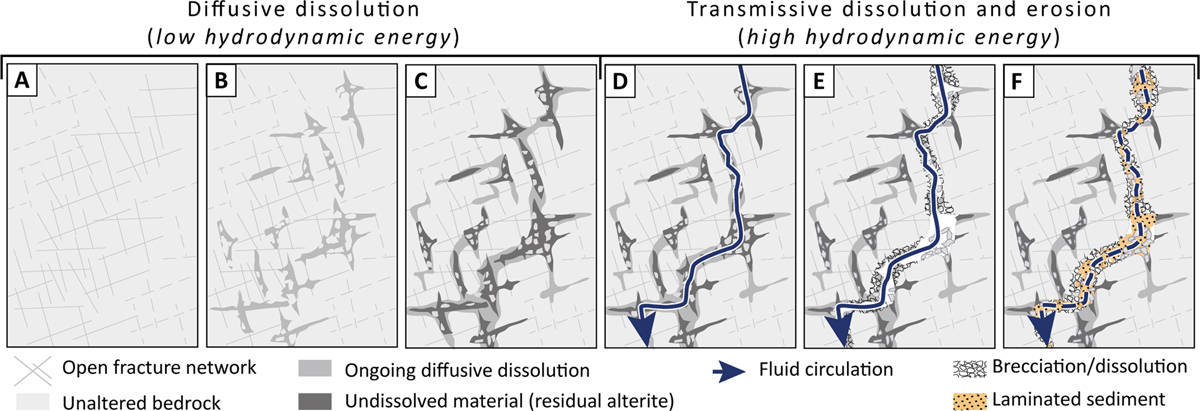Fig. 12

Download original image
Conceptual model, applicable in both cross-section and plan views, illustrating the process of ghost-rock karstification leading to the formation of a corridor network. A to C. Ghost-rock karstification occurs when the bedrock is located in the deep phreatic zone with low hydrodynamic energy. Dissolution propagates by diffusion from the most permeable zones in the rock volume (open fracture, bedding plane, permeable lithology); leaving a mesh of undissolved materials in the centre of the dissolution features. D to F. With increasing hydrodynamic energy, caused by a base-level drop, fluid circulation is introduced, controlled by a hydraulic gradient. This fluid follows preferred pathways along pre-existing discontinuities, such as ghost-rock features, and connects them while evacuating the undissolved soft material. As the fluid flows, the pathway enlarges due to dissolution and brecciation, the drainage system organises itself and it may allow for sediment transport and deposition.
Current usage metrics show cumulative count of Article Views (full-text article views including HTML views, PDF and ePub downloads, according to the available data) and Abstracts Views on Vision4Press platform.
Data correspond to usage on the plateform after 2015. The current usage metrics is available 48-96 hours after online publication and is updated daily on week days.
Initial download of the metrics may take a while.




